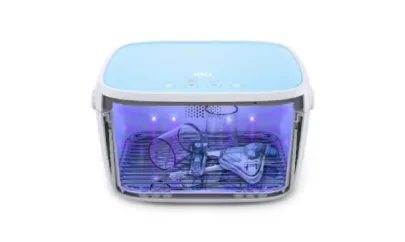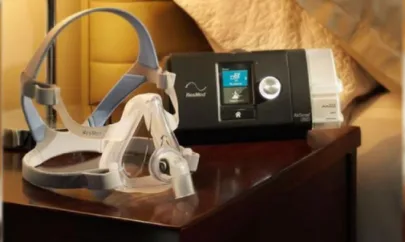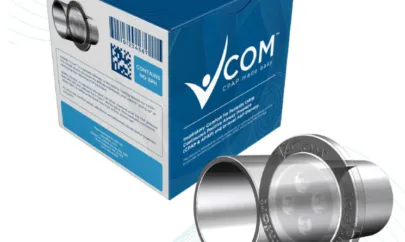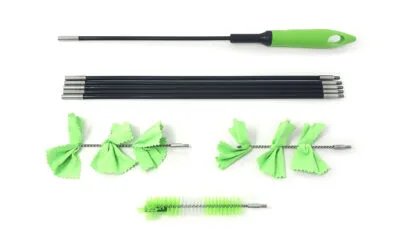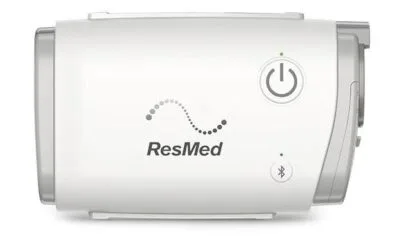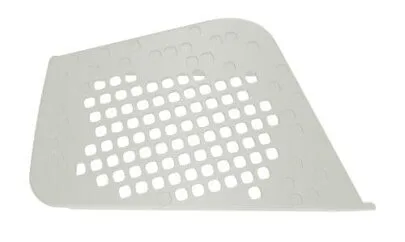
Using a Sleep Apnea Chin Strap with a CPAP Mask
Continuous positive airway pressure (CPAP) is used in the management and treatment of breathing disorders. It works by delivering a continuous stream of air pressure through a mask to keep the patient’s airway open during sleep. It is particularly beneficial in the management of obstructive sleep apnea (OSA) and prevents interruptions in breathing during sleep.
One of the common issues faced by patients who are being treated with a CPAP is mouth breathing during sleep. This can cause air leakage, reducing the effectiveness of your CPAP treatment and leading to dry mouth, bad breath, and fatigue. A sleep apnea chin strap, designed to complement your CPAP mask, can be a helpful solution.
A chin strap for CPAP users is a device that gently secures your jaw, keeping your mouth closed while you sleep. This promotes nasal breathing and prevents air from escaping through your mouth, significantly boosting the benefits of CPAP therapy. For individuals dealing with snoring, sleep apnea, or other breathing-related sleep disorders, a chin strap can be transformative.
In this article, we’ll explore how a sleep apnea chin strap works, how to set it up, and tips for ensuring comfort and compliance. Whether you’re new to CPAP therapy or looking to enhance your setup, wearing a chin strap with CPAP equipment can improve your sleep quality and overall health.
Benefits of Adding a Chin Strap
Adding a chin strap to your CPAP therapy can provide several important benefits, especially for individuals who experience mouth breathing during sleep. One of the main advantages is its ability to prevent air leaks, which can otherwise reduce the effectiveness of your CPAP treatment. Air leaks can lead to dry mouth, dry eyes, nasal congestion and affect the accuracy of the pressure settings. It can affect the quality of sleep and cause noise and irritation. Large leaks can worsen sleep apnea symptoms.
By keeping your mouth closed, the chin strap ensures that the air pressure is delivered directly to your airways, maximizing the therapeutic benefits of the therapy. It can reduce the symptoms related to mouth breathing, such as dry mouth, bad breath, and fatigue. By encouraging nasal breathing and reducing air leaks, a chin strap can improve overall sleep duration and quality.
For some patients, a chin strap can also improve compliance with CPAP therapy. By reducing or alleviating the discomfort and side effects associated with mouth breathing, like dry mouth and bad breath, patients are more likely to adhere to their treatment plan and use their CPAP machine for longer periods.
Who Should Consider Using a Chin Strap?
Not everyone undergoing CPAP therapy will benefit from a chin strap, but certain patients may find it particularly useful. If you experience dry mouth or throat, especially upon waking, it may indicate that you are mouth breathing during sleep. In such cases, a chin strap can be an effective solution to prevent these symptoms and ensure you receive the full benefits of your CPAP therapy.
Individuals using nasal masks or nasal pillow masks are also excellent candidates for a chin strap. These types of masks do not cover the mouth, which can lead to mouth breathing. A chin strap can help address this issue by keeping the mouth closed and promoting nasal breathing.
Also, those who find full-face CPAP masks uncomfortable or unsuitable may benefit from using a chin strap in conjunction with their existing nasal or nasal pillow mask. This combination can provide the necessary support to keep the mouth closed without requiring a full-face mask, enhancing stability and reducing discomfort.
Choosing the Right Chin Strap
When selecting a chin strap to use with your CPAP therapy, it’s important to consider a few key factors to ensure you find the most comfortable and effective option. First, look for a chin strap made from soft, breathable materials such as Lycra, polyester foam, or similar fabrics. These materials provide comfort and flexibility, making it easier to wear the chin strap throughout the night.
Another important aspect is adjustability. An adjustable chin strap allows you to customize the fit to your head and chin, ensuring it is secure and comfortable. Look for straps with Velcro or similar adjustable mechanisms for a comfortable and tailored fit.
Also, consider the design of the chin strap. Some models come with additional support straps that wrap around the back of the head, providing extra stability and ensuring the chin strap stays in place. This can be useful for patients who move around a lot during sleep.
Step-by-Step Setup
To set up your CPAP with a chin strap, follow these steps to ensure a comfortable and secure fit:
- Place the Chin Strap Over Your Head: Start by positioning the chin strap over your head, ensuring the curved edge or chin cup is in front of your chin. For some models, the label should be at the back of your head.
- Secure the Chin Cup: Gently place your chin inside the chin cup or adjust the strap so it sits comfortably under your chin. Make sure it is not too tight or too loose, as this can affect its effectiveness.
- Adjust the Top Straps: Close the Velcro at the top of your head, adjusting the tightness as needed. Ensure the straps are secure but not too tight.
- Final Adjustments: Adjust the support strap and the main chin strap to achieve a comfortable and secure fit. Make sure the chin strap does not interfere with your CPAP mask headgear straps.
- Check the Fit: Before going to sleep, check the fit of the chin strap to ensure it is comfortable and secure. You should feel supported but not restricted. Make any adjustments if necessary.
Adjusting for Comfort
For maximum comfort while using a chin strap with your CPAP therapy, you need to adjust it to fit your face. Start by wearing the chin strap and CPAP mask for short periods during the day while you’re awake. This can help you get accustomed to the feel and fit of the equipment. For example, try wearing the mask and chin strap while watching TV or reading a book.
When putting on the chin strap, make sure it supports your jaw rather than forcing your mouth shut. The strap should be snug but not too tight. Adjust the Velcro or hook-and-loop closure accordingly. If you are still unsure, you can watch instructional videos or consult your provider.
If you find that the chin strap is causing any irritation or discomfort, consider using a chin strap with a soft, flexible chin cup. These designs are made to provide a gentle feel without harsh rubbing or abrasion, enhancing overall comfort during sleep.
Maintaining Your Equipment
Proper maintenance of your CPAP equipment, including the chin strap, is essential for ensuring comfort and compliance. Regularly clean your CPAP mask, headgear, and chin strap to prevent the buildup of bacteria and other contaminants. Use mild soap and warm water, and allow the components to air dry before reassembling your setup.
Check your chin strap regularly for signs of wear and tear. If the straps become loose or the material starts to degrade, it may need replacing. Also, ensure that the headgear and other components of your CPAP mask are in good condition and properly adjusted to work in conjunction with the chin strap.
Having a good bedtime routine can also enhance your overall comfort and compliance with CPAP therapy. Regular exercise, avoiding caffeine and alcohol before bedtime, and relaxing before sleep (e.g., taking a warm bath) can all contribute to better sleep quality and make it easier to adapt to using a chin strap with your CPAP mask.
Talk to your doctor
The use of a chin strap as part of your CPAP therapy can greatly improve the effectiveness and comfort of your treatment. A chin strap keeps your mouth closed during sleep which helps minimize air leaks and encourages nasal breathing. This helps prevent issues such as dry mouth, snoring, and discomfort and can lead to better sleep quality and improved overall health and well being.
Make sure to select a chin strap that is made from soft, breathable materials. They are also adjustable for optimal fit and comfort. Choosing the right device and adjusting it to your face makes a noticeable difference.
If you are suffering from mouth breathing and air leaks with your CPAP therapy, consider discussing the use of a chin strap with your healthcare provider. This simple yet effective solution can help you optimize your treatment outcome, so speak to your healthcare provider today to enhance your sleep and overall well-being.



